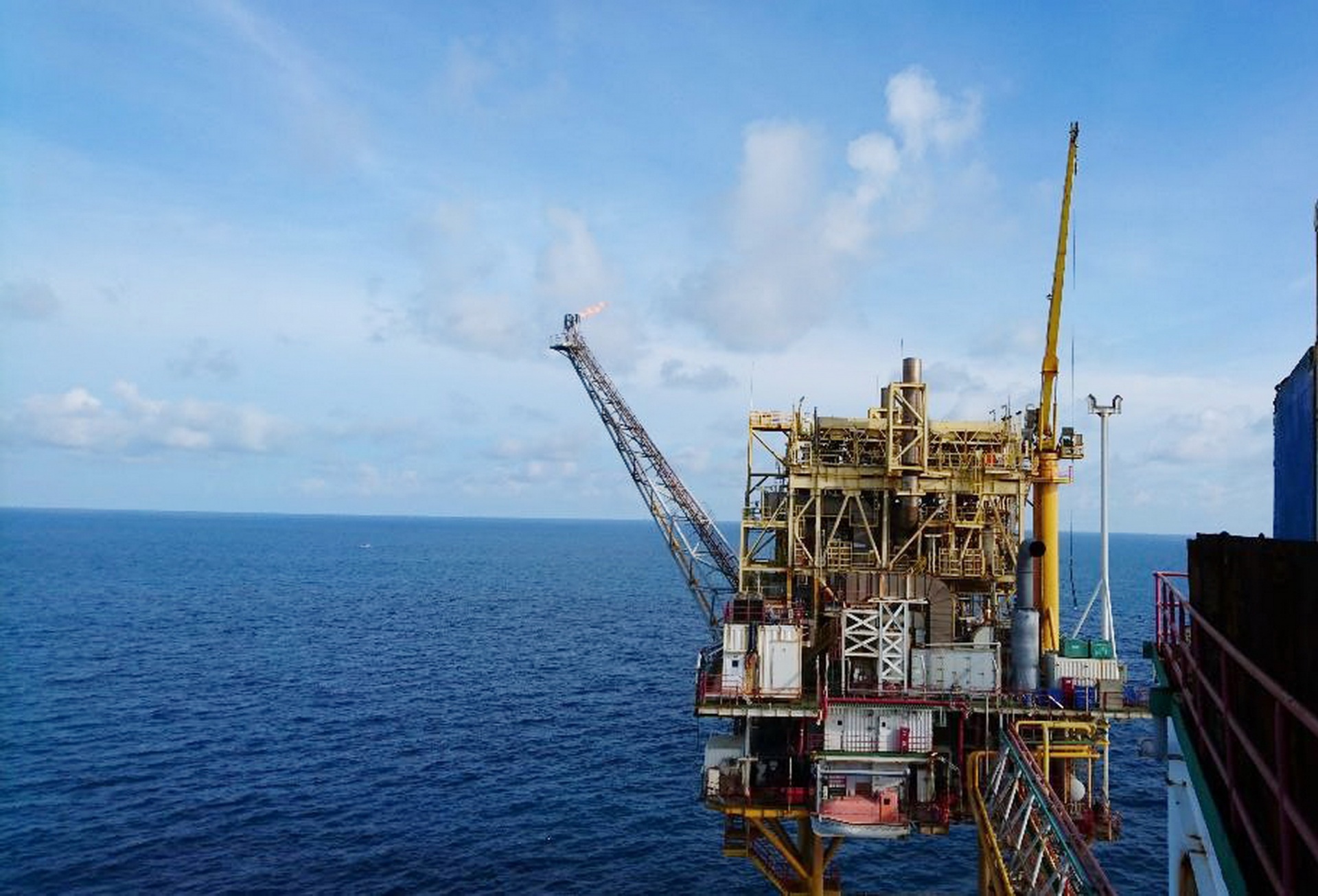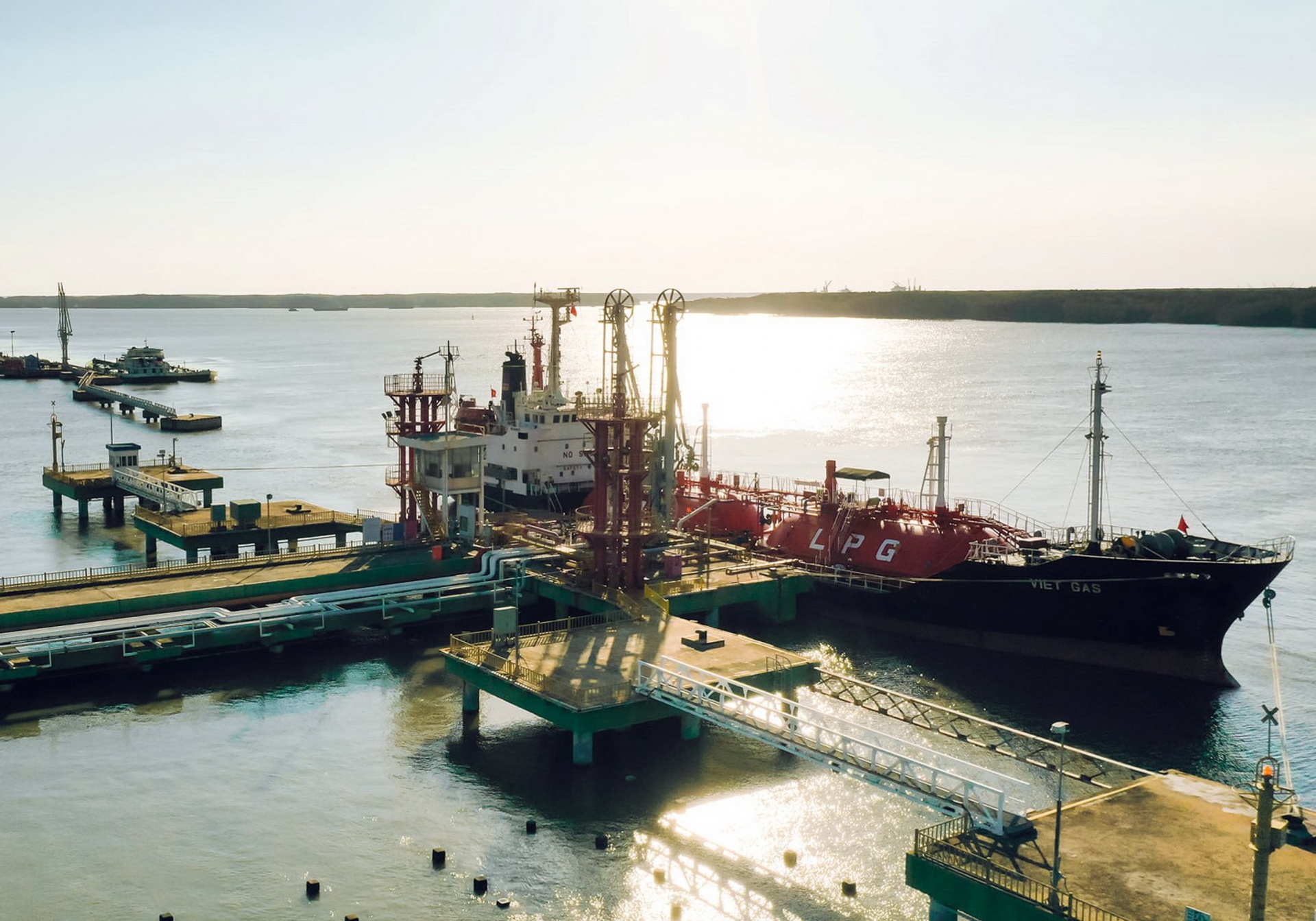PV GAS invests nearly $108.6 million in facilities to prepare for LNG imports
LNG is a source of energy similar to dry gas, used to feed power plants, industrial sites, and urban areas. Nowadays, LNG is also used as a source of energy for transport vehicles like ships, trains, and heavy trucks to reduce environmental pollution.
The Politburo's Resolution No.55-NQ/TW approved in February 2020, setting out the National Energy Development Strategy of Vietnam to 2030 with a vision towards 2045, stipulates that priority is to be given to investment in facilities for importing and consuming LNG and to developing gas-based thermal power production utilising LNG to make gas-fired power a strategic source of energy for the nation.
 |
| The strategy of developing LNG in Vietnam will offset the decreasing gas production |
Decision No.2233/QD-TTg on December 28, 2020 by the prime minister has approved the scheme on developing a competitive energy market, which clearly states that the natural gas market needs to be established and developed in 2021-2025 under the leadership of specialised national corporations: PetroVietnam and PetroVietnam Gas Corporation (PV GAS).
Besides, Decision No.60/QD-TTg, signed by the PM in January 2017 approving the development plan of Vietnam’s gas industry until 2025 with a vision towards 2035 has also directed the sector to encourage cooperation with foreign partners; begin importing LNG; catch up with the regional and international natural gas market; research and find markets and escalate the establishment of port facilities to receive and import LNG; realise and conduct projects involving foreign production of LNG, before transporting and distributing LNG to Vietnam.
| The national strategy for LNG development is instrumental helping to elevate the status and reputation of PV GAS, further establishing PV GAS as the pioneer and leader in the gas industry, specifically in the LNG market in Vietnam. |
These decisions have clearly indicated that importing and developing LNG is one of the nation’s sustainable solutions for energy production, meeting development demands in the new era while catching up with international energy trends.
According to a PV GAS representative, the company is scaling up efforts to complete the necessary infrastructure to import LNG by 2022, with the goal of ensuring the safe and efficient distribution of both domestic and imported LNG sources.
Following the national energy development strategy, with its leading role in the natural gas industry in Vietnam, PV GAS is working on strategies to develop the natural gas market and diversify its customer base.
The company has contacted potential LNG consumers including gas-fired thermal power plants which account for about 70 per cent of the customer count. The rest includes customers in the petro-chemical, industrial, and transport sectors, and urban centres.
Building synchronised infrastructure for LNG import and commercialisation
In light of its orientation on gas industry infrastructure development, PV GAS has concentrated investment on core projects, prioritising facilities for importing and distributing LNG; optimising existing infrastructure; identifying ways of incorporating existing facilities from other energy sectors.
With this starting point, PV GAS is focusing on establishing LNG facilities to complement the existing energy supply. One of those developments is the LNG Warehouse with a capacity of one million tonnes per year at Thi Vai Terminal in the southern province of Ba Ria-Vung Tau.
 |
| PV GAS' gas product import and export ports will be developed into mixed ports with additional service functions |
Up until now, the project has completed 90 per cent of the work volume and is expected to begin operation in the third quarter of 2022. Complementary projects such as an LNG storage system and Thi Vai-Phu My natural gas pipe will be completed to ensure consistent implementation.
PV GAS has strong financial potential, with its asset value reaching VND73.218 trillion ($3.18 billion) by September 30, an increase of VND10 trillion ($434.8 million) compared to the beginning of the year. Equity capital is still the main source of capital, accounting for 31.45 per cent. As a large-scale investment of PV GAS in recent years, investment into the LNG Warehouse has reached VND2.498 trillion ($108.6 million) by the end of the third quarter of 2021, two years after the beginning of the project in 2019.
Regarding its LNG facilities, PV GAS is investing in other projects such as Son My LNG warehouse port with VND138 billion ($6 million) and Thi Vai-Phu My LNG transport pipeline with VND139 billion ($6 million).
In the near future, PV GAS will focus on developing facilities for importing, storing, and distributing LNG across the country, with each region accommodating three LNG supply centres: the southern region with Thi Vai LNG Warehouse, central region with Son My LNG Warehouse, and northern region with respective projects in Quang Ninh, Haiphong, and Thanh Hoa.
In the southern region, PV GAS is building an extension network from Thi Vai LNG Warehouse to connect to its existing pipeline network, with plans to build an East-West pipeline to improve throughput and extend its network to both the Southeastern and Southwestern regions.
Regarding Son My LNG Warehouse, PV GAS is planning to build a pipeline network and distribution system in the central region, as well as to build an extension pipeline to transport LNG from Son My Warehouse in Ninh Thuan province to Ba Ria-Vung Tau province.
In the northern region, PV GAS is expected to build an LNG pipeline network and distribution systems serving project sites in Quang Ninh, Haiphong, and Thanh Hoa with plans to connect them to the existing pipeline.
PV GAS is currently focusing on preparing short- and medium-term import sources, having signed six contracts with LNG suppliers.
The distribution of LNG is also being actively prepared by PV GAS, with plans to establish a pricing structure and rates for LNG products applicable to different suppliers and customers, among others.
The national strategy for LNG development is instrumental in helping to elevate the status and reputation of PV GAS, further establishing PV GAS as the pioneer and leader in the gas industry, specifically in the LNG market in Vietnam.
What the stars mean:
★ Poor ★ ★ Promising ★★★ Good ★★★★ Very good ★★★★★ Exceptional
Related Contents
Latest News
More News
- Global partnerships key to Vietnam’s IFC development (December 26, 2025 | 16:18)
- Vingroup pulls out of bid to invest in North-South high-speed railway (December 26, 2025 | 11:42)
- Strengthening supply chains through trade promotions and customs reform (December 24, 2025 | 14:00)
- PM orders investment model for North–South high-speed rail (December 22, 2025 | 17:43)
- LS Eco Energy to invest in Vietnam rare earth sector (December 22, 2025 | 17:31)
- Government moves to establish International Financial Centre (December 21, 2025 | 21:00)
- Vietnam's IFC to target global investment flows (December 21, 2025 | 18:00)
- Two national hospitals expand capacity with new facilities (December 20, 2025 | 09:00)
- Ha Tinh breaks ground on major Vingroup industrial and energy projects (December 19, 2025 | 18:24)
- EVN launches major power infrastructure projects nationwide (December 19, 2025 | 18:17)

 Tag:
Tag:



























 Mobile Version
Mobile Version